15 years one-stop China custom CNC machining parts factory
 1001 |
Published by VMT at Feb 01 2025 | Reading Time:About 6 minutes
1001 |
Published by VMT at Feb 01 2025 | Reading Time:About 6 minutes
The automotive industry relies heavily on fasteners to secure and assemble parts, ensuring that vehicles run safely and efficiently. From simple screws to specialized rivets, automotive fasteners play a pivotal role in connecting components, and understanding their types and functions is essential for both manufacturers and automotive engineers. However, with so many options available, choosing the right fastener for specific automotive applications can be complex and daunting. In this article, we will guide you through the various types of fasteners used in automotive manufacturing and offer insights on when and why to use them.
Automotive fasteners are components used to mechanically join or secure two or more parts together in a vehicle’s construction. These fasteners play a critical role in ensuring the structural integrity, functionality, and safety of various automotive systems, from the engine to the body panels. They include bolts, nuts, screws, rivets, washers, clips, and more. Each fastener type is selected based on its strength, load-bearing capacity, and resistance to the demanding conditions present in automotive environments.
The importance of automotive fasteners cannot be overstated. They are integral to the assembly and maintenance of a vehicle, enabling the joining of parts in a secure and stable manner. Given the varying loads and environmental conditions faced by vehicles, automotive fasteners are designed to withstand high stress, corrosion, temperature extremes, and mechanical wear. For instance, metal automotive fasteners are often chosen for structural components requiring high strength, while plastic automotive fasteners are used in applications where weight reduction is important, such as in the interior components of a car.
Automotive fasteners are primarily classified into two main categories based on the material they are made from: metal fasteners and plastic fasteners. Each category offers distinct advantages depending on the application, environmental conditions, and performance requirements.
Introduction to Metal Automotive Fasteners
Metal fasteners are the most commonly used type in automotive manufacturing due to their strength, durability, and versatility. These fasteners are generally used in structural, high-stress applications where strength and resistance to wear are critical. The materials used for metal fasteners include various alloys, steel, and other metals that can withstand high pressures and extreme environmental conditions like high temperatures or exposure to corrosive substances.
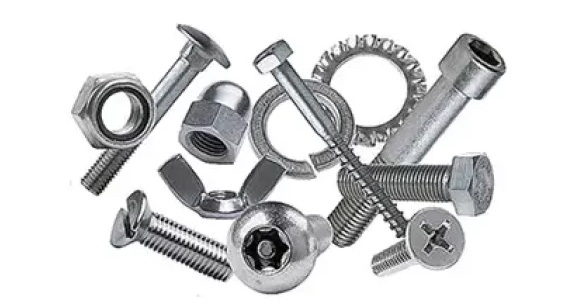
What Materials Are Automotive Metal Fasteners Made Of?
Metal fasteners are made from a variety of materials, chosen based on their specific properties such as strength, corrosion resistance, and cost-effectiveness. Common materials include:
What Types of Metal Automotive Fasteners Are There? What Parts Are They Suitable For?
There are many types of metal automotive fasteners, each suited to specific applications:
What Surface Treatments Can Be Done on Metal Automotive Fasteners?
Metal automotive fasteners can undergo various surface treatments to enhance their performance, resistance, and durability:
Introduction to Plastic Automotive Fasteners
While metal fasteners dominate automotive manufacturing, plastic fasteners have gained popularity in recent years due to their lightweight properties, cost-effectiveness, and corrosion resistance. These fasteners are typically used in non-structural applications such as interior components, trim, and lightweight assemblies where reducing weight is a priority.
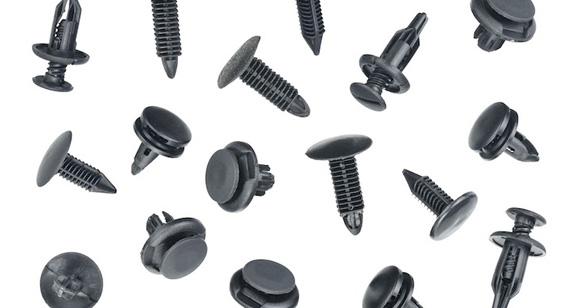
What Materials Are Automotive Plastic Fasteners Made Of?
Automotive plastic fasteners are typically made from high-performance plastics that offer durability, flexibility, and resistance to environmental factors like heat and moisture. The most common materials include:
What Types of Plastic Automotive Fasteners Are There? What Parts Are They Suitable For?
Plastic fasteners come in a range of shapes and designs, making them suitable for different automotive applications. Common types include:
What Surface Treatments Can Be Done on Plastic Automotive Fasteners?
While plastic fasteners typically do not require as many surface treatments as metal fasteners, they can still be modified for enhanced performance:
Conclusion
Automotive fasteners are an integral part of vehicle construction, ensuring the secure and reliable connection of parts. Whether using metal automotive fasteners for high-strength applications or plastic fasteners for lightweight, corrosion-resistant solutions, the right choice of material is essential for optimal performance. Understanding the materials, types, and surface treatments available for these fasteners helps manufacturers choose the best option for their specific automotive needs, enhancing the vehicle's longevity, safety, and overall performance. Whether working with CNC machining parts, custom CNC machining, or CNC machining services, understanding fastener materials is key to ensuring the right fit for every application.
Automotive fasteners are integral components used to secure parts and ensure the structural integrity of vehicles. These fasteners come in various types and materials, each designed for specific applications. Understanding the common types of automotive fasteners, including nuts, bolts, and specialty fasteners, is crucial for engineers, manufacturers, and mechanics to ensure that they are selecting the right fastener for each task. In this section, we will explore nuts, one of the most widely used fasteners in the automotive industry, along with their various types.
Nuts in Automotive Fastening
A nut is a type of fastener with an internally threaded hole designed to fit onto a bolt or stud. When paired with a bolt, a nut helps secure two or more components together by tightening onto the threaded portion of the bolt. Nuts are typically made of metal, although some plastic variants exist for lightweight applications. They are essential in ensuring that parts stay in place under high pressure and stress, making them crucial in almost every automotive assembly.
What Are Nuts?
Nuts work by creating a secure connection when tightened against a bolt or threaded stud. The nut is threaded on the inside, while the bolt or stud has external threads. When a bolt passes through a component, a nut is screwed onto the bolt’s end, and tightening the nut creates clamping force, holding the components together. The tightness of the nut determines the strength of the joint. Because nuts rely on threads for securing components, their performance depends on the quality of both the nut and the corresponding bolt threads.
Nuts in the automotive industry come in a wide variety of designs, each suited to specific functions. These types offer different advantages in terms of ease of installation, vibration resistance, and security.
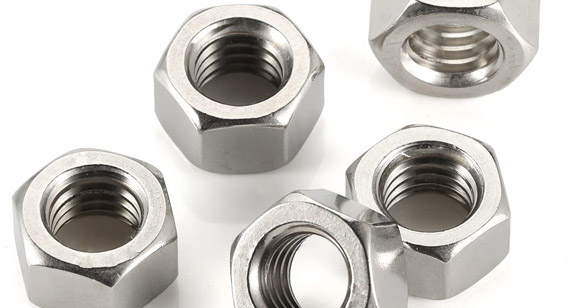
Other Types of Nut Fasteners Used in the Automotive Industry Include:
Applications of Nut Fasteners in Automotive Industry
Nuts are widely used throughout automotive manufacturing and maintenance, serving critical functions in the assembly of various components. Some of their most common applications include:
Nuts, Bolts, and Screws: Automotive Fasteners in Action
Automotive fasteners are integral components in the assembly and maintenance of vehicles, ensuring that all parts are securely fastened and function as designed. Among the many fastener types used, nuts, bolts, and screws are some of the most common and versatile. These fasteners play critical roles in automotive design, helping to secure parts in place, prevent movement, and ensure overall vehicle safety. In this section, we will explore the different types of nuts, bolts, and screws used in the automotive industry, as well as other specialized fasteners that contribute to automotive design and function.
Nuts: Essential Automotive Fasteners
As previously discussed, nuts are fasteners with an internally threaded hole that fit onto a bolt or threaded stud. They are used to secure components by creating a strong clamping force. But what are the specific applications of nuts in automotive design? Nuts are used for a wide variety of purposes, including:
Bolts: The Backbone of Automotive Assembly
A bolt is a type of fastener with an external thread, typically used to secure parts by passing through them and being fastened with a nut. Bolts are essential in automotive construction and are often used for heavy-duty applications where strength and stability are critical.
What Are Bolts?
Bolts are externally threaded fasteners designed to be inserted into pre-made holes and tightened with a nut. They provide robust, permanent connections and are used in parts that need to be joined together in a strong, stable manner. When paired with a nut, bolts can withstand substantial loads and stresses, making them ideal for automotive manufacturing.
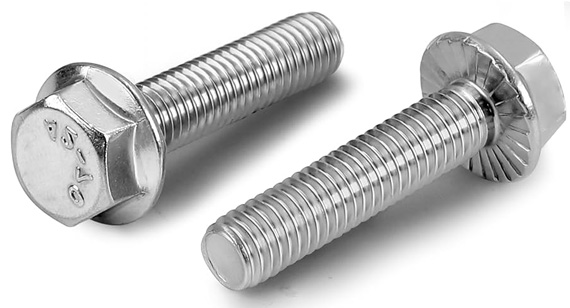
Different Types of Automotive Bolts Include:
Screws: Versatile Fasteners for Automotive Use
A screw is a threaded fastener that is often used to attach or secure components in the automotive industry. Unlike bolts, which are typically used with nuts, screws are often self-threading and can be inserted directly into a material.
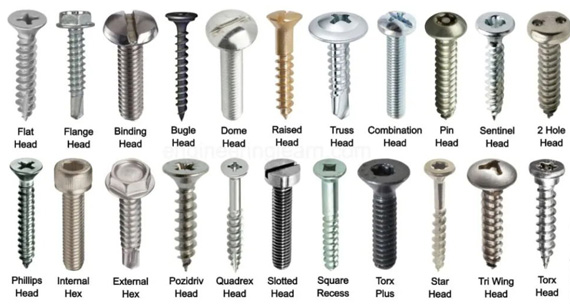
What Are Screws?
Screws feature an external thread that allows them to cut into a material as they are driven in. They are versatile and can be used in a wide range of applications, from securing panels to connecting electrical components. Screws can also be used for precise adjustments, and their self-threading nature allows them to fasten without needing a nut or external support.
Other Types of Screw Fasteners Used in the Automotive Industry Include:
Automotive fasteners go beyond the basic nuts, bolts, and screws, and also include self-pressing fasteners, riveted fasteners, blind thread inserts, studs, washers, clips, clamps, springs, and pins. These components play vital roles in securing parts, ensuring safety, and offering precision in automotive design.
Special Fasteners
Conclusion
The various types of nuts, bolts, screws, and special fasteners used in automotive design each serve specific purposes, from securing engine components to ensuring the structural integrity of a vehicle's frame. Understanding the types and functions of these fasteners is essential for manufacturers and mechanics to make informed decisions regarding the assembly and repair of vehicles. Whether in CNC machining parts, custom CNC machining, or CNC machining services, selecting the right fastener can significantly impact the safety, durability, and performance of the vehicle. Fasteners are the unsung heroes of automotive design—ensuring everything stays in place, from suspension systems to interior panels.
Automotive fasteners are critical to nearly every aspect of vehicle design and assembly. Their primary function is to hold parts securely in place, ensuring that vehicles perform safely, efficiently, and reliably. The types of fasteners used can vary greatly depending on the specific application, but all must meet stringent standards of performance. Below are some of the most common applications of automotive fasteners in various systems of a vehicle.
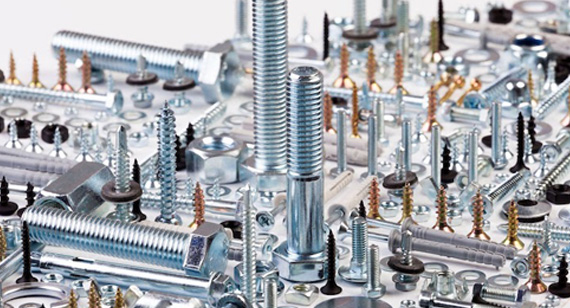
1. Engine Components
Engine components experience extreme stresses and conditions, making the selection of fasteners for these parts crucial. Engine bolts, nuts, and screws are used to secure everything from cylinder heads to exhaust manifolds. These fasteners must withstand high temperatures, vibrations, and heavy loads, requiring materials that offer both strength and heat resistance. Hex bolts and carriage bolts are often used to secure critical engine parts like pistons, crankshafts, and valve covers, ensuring a tight seal that can prevent fluid leakage and maintain proper engine function.
2. Suspension and Steering Systems
The suspension and steering systems are subject to significant forces as the vehicle moves and maneuvers. Fasteners in this area must be both durable and capable of handling dynamic loads. U-bolts, hex flange bolts, and carriage bolts are commonly used in the suspension and steering systems to connect components like shock absorbers, control arms, tie rods, and brake calipers. These fasteners must provide a high level of torsional strength to withstand the forces generated during vehicle movement.
3. Body and Interior
Automotive body panels and interior components are fastened with a variety of fasteners designed for different purposes. Clips, rivets, self-tapping screws, and studs are typically used to attach exterior panels, like fenders, doors, and hatches, as well as interior parts such as dashboard assemblies and seats. Fasteners in these applications must provide easy assembly and disassembly for repairs, all while maintaining a strong, secure connection. Additionally, decorative fasteners or blind rivets are often used for aesthetic purposes, ensuring a clean finish with minimal visible hardware.
4. Electrical Systems
Fasteners for automotive electrical systems must meet specific standards for safety and reliability. Wire clamps, threaded inserts, and brackets secure wiring harnesses, sensors, and electronic components within the vehicle. These fasteners must be corrosion-resistant, as electrical components are exposed to moisture, oils, and chemicals. Materials like stainless steel or zinc-plated fasteners are commonly used to ensure that the fasteners perform well in electrical systems, preventing corrosion and electrical failure.
5. Wheels
The wheels of a vehicle are subject to heavy stresses, especially when the vehicle is moving at high speeds or carrying heavy loads. Fasteners in the wheel assembly need to be extremely robust to handle this. Wheel bolts or lug nuts are used to attach the wheels to the hub and must withstand high torque to prevent loosening. Fasteners for wheel hubs and brake rotors also need to be resistant to high temperatures, as friction generates substantial heat during braking.
Choosing the right fastener for automotive applications is not as simple as selecting the most commonly used type. The materials, design, and conditions the fastener will be exposed to play a critical role in ensuring its reliability and performance. Below are some of the most important factors that influence fastener selection in automotive applications:
Strength and Load Considerations
The fasteners used in engine components, suspension systems, and brakes must be able to withstand high levels of mechanical stress. Fasteners must be selected based on their tensile strength, shear strength, and load-bearing capacity. For example, bolts used in engine blocks or control arms must handle tens of thousands of pounds of pressure, requiring materials like high-strength steel or titanium. The design of the fastener, such as the thread pitch or head style, will also affect its ability to bear load.
Corrosion Resistance
Corrosion is a major concern in automotive manufacturing, as fasteners are constantly exposed to water, road salts, and chemicals. Materials that are resistant to rust and corrosion, such as stainless steel, galvanized steel, or aluminum, are often chosen for fasteners in parts that are exposed to the elements. In applications like exhaust systems or brake lines, corrosion-resistant coatings and finishes such as zinc plating or black oxide coatings are applied to ensure longevity and reliability.
Temperature and Environmental Conditions
Automotive components often operate in extreme environmental conditions. Fasteners used in engine parts, brake systems, and exhaust systems must withstand high temperatures without losing their strength. Similarly, fasteners used in electrical systems must be designed to handle the risk of short-circuiting due to moisture or extreme heat. Choosing materials with good thermal stability, such as high-temperature alloys or heat-resistant coatings, is essential for ensuring that fasteners remain functional under such conditions.
Selecting the correct fastener for automotive applications requires understanding the requirements of the part or system being assembled. Below are several key considerations to keep in mind when choosing automotive fasteners:
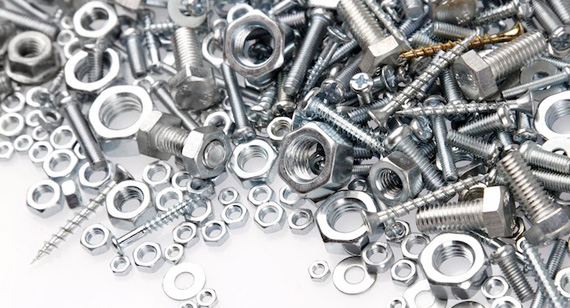
1. Automotive Fastener Applications
The first step in selecting a fastener is understanding the specific application. Different systems of the vehicle have different requirements. For example, engine components require high-strength bolts that can withstand heat and pressure, while interior panels may require decorative screws or clips. Fasteners used in suspension systems must be able to handle dynamic forces, while those used in electrical systems need to prevent electrical failure.
2. Threads
The thread type is a crucial aspect of fastener selection. The choice of thread pitch and thread material determines the fit and strength of the connection. Fine threads, for example, provide more holding power and resistance to loosening compared to coarse threads, making them ideal for high-stress applications like brake systems. Consideration should also be given to whether the fastener will be used in tapped holes or whether a nut will be required to complete the fastening.
3. Structural Materials
The structural material of the parts being fastened is a key factor. For instance, steel fasteners are commonly used for engine mounts and chassis parts, while aluminum fasteners might be used in interior components where weight reduction is important. Plastic fasteners can be found in non-load-bearing applications where cost and weight are factors.
4. Fastener Exposure
Finally, understanding the exposure conditions of the fastener is vital. Parts exposed to moisture, extreme temperatures, or chemical exposure will require fasteners made from corrosion-resistant materials or treated with protective coatings. Fasteners that will be exposed to high torque or vibration should be selected for their strength and ability to resist loosening.
Conclusion
Selecting the right automotive fastener is a complex but essential part of vehicle design and manufacturing. From engine components to electrical systems, fasteners play a key role in maintaining the integrity, performance, and safety of the vehicle. Considering factors like strength, corrosion resistance, and environmental conditions ensures that the right fasteners are selected for the right application. By following these guidelines, automotive manufacturers can ensure that their vehicles are not only well-assembled but also reliable and durable for years of use.
Fastening Technology in Automotive Manufacturing
Fastening technology plays a crucial role in automotive manufacturing, ensuring that various components are securely connected to meet performance, safety, and durability standards. As vehicles become more complex and technologically advanced, the methods used to fasten parts must evolve to address new materials, improved manufacturing processes, and stringent regulatory requirements. Below, we’ll explore some of the key fastening technologies used in automotive manufacturing, such as torque-related fastening, adhesive fastening, and welding and bonding.
Torque-Related Fastening
Torque-related fastening refers to the use of torque to achieve the proper level of tightness when securing automotive components with fasteners. This method ensures that bolts, nuts, and screws are tightened with a specified amount of force to prevent the fastener from becoming too loose or too tight. Proper torque application is crucial for the performance and safety of automotive parts.
1. Overview of Torque and Its Importance in Fastening
Torque is the rotational force applied to a fastener, which ultimately determines how tightly the fastener holds two parts together. It is measured in units such as Newton-meters (Nm) or foot-pounds (ft-lb). Torque application in fastening is critical because it directly affects the clamping force, which determines the strength of the connection. If the torque is too low, the fastener may not be sufficiently tight, which could lead to loosening or vibration-induced failures. Conversely, over-tightening can cause the fastener to strip, fracture, or even damage the surrounding components.
In automotive manufacturing, torque specifications are carefully calculated and applied to ensure that fasteners are tightened appropriately for each application. For example, in engine assembly, the bolts securing critical components like cylinder heads need to be tightened to very specific torque values to ensure they can withstand the pressure and heat without loosening.
2. Torque Specifications and Fastening Procedures
Torque specifications in automotive manufacturing are not arbitrary. They are often specified by the automotive manufacturer or industry standards and depend on factors like the fastener material, component type, load requirements, and operating conditions. For instance, the torque required for a wheel bolt is different from that of a brake rotor bolt due to differences in the forces applied to each.
The tightening procedure involves using the correct torque tools, such as torque wrenches or torque guns, to apply the specified amount of torque consistently across all fasteners. Automated tightening systems are frequently used in high-volume automotive production to ensure accuracy and efficiency.
Adhesive Fastening
Adhesive fastening involves the use of adhesives to bond parts together, offering an alternative to traditional mechanical fastening methods like bolts, screws, and welds. This technology has gained significant traction in the automotive industry due to its ability to provide strong, permanent bonds without the need for drilling or threading holes.
1. Application of Adhesives in Automotive Assembly
Adhesive fastening is commonly used in automotive assembly for bonding materials like sheet metal, plastics, composites, and glass. The automotive industry uses adhesives for everything from body panels and windshields to trim parts and interior elements. Adhesives also serve in structural bonding, particularly for lightweight components where mechanical fasteners might add undesirable weight.
The automotive industry's adoption of adhesive bonding technology is driven by its ability to improve vehicle strength while reducing weight. Adhesives are used to bond lightweight materials such as aluminum and carbon fiber to create stronger, more durable structures without compromising fuel efficiency or performance.
2. Advantages and Challenges of Adhesive Fastening
The primary advantages of adhesive fastening include:
However, adhesive fastening also has some challenges:
Welding and Bonding
Welding and bonding are two advanced fastening techniques that provide strong, durable connections, particularly in critical automotive applications. These methods are used when mechanical fasteners are either impractical or insufficient for the intended function.
1. Strong Fastening by Welding/Bonding
Welding involves melting the base material and adding a filler material to create a strong bond between two parts. This technique is commonly used for metal components in the automotive industry, including chassis and exhaust systems. MIG welding, TIG welding, and spot welding are commonly employed to ensure a strong, permanent connection.
Bonding, on the other hand, uses adhesive or other bonding agents to secure components together without the need for heat or mechanical fastening. This can be particularly useful when joining dissimilar materials, such as metal to plastic or glass to metal, where welding would cause damage.
Both welding and bonding techniques provide high-strength, long-lasting bonds, and are often chosen for their ability to form seamless, robust joints that are capable of withstanding high loads, vibrations, and thermal expansion.
2. Comparison of Welding and Bonding Technology in Automotive Manufacturing
Both welding and bonding offer distinct advantages in the automotive manufacturing process. However, their suitability depends on the specific application.
The choice between welding and bonding depends on several factors, including material types, structural requirements, environmental conditions, and production speed.
Conclusion
Fastening technology is fundamental to the automotive manufacturing process, ensuring that parts are securely connected, perform reliably, and maintain safety standards. Whether through torque-related fastening, adhesive bonding, or welding, each fastening method has its strengths and challenges, and the appropriate choice depends on the application requirements. By understanding these technologies, automotive manufacturers can improve the efficiency, performance, and safety of their vehicles.
The proper tightening of automotive fasteners is critical for ensuring the safety, performance, and longevity of the vehicle. Incorrectly tightened fasteners can result in loose connections, which could lead to vibrations, failure, or even accidents. Conversely, over-tightened fasteners can damage components, leading to unnecessary wear and potentially causing costly repairs.
To ensure proper tightening, automotive manufacturers often rely on torque specifications and tightening procedures that are customized for specific parts and materials. Tightening must also account for factors such as friction, material deformability, and thread lubrication.
Whether you're working on prototyping new vehicle components or need fasteners for automotive testing products, choosing the right fasteners is essential to ensure the accuracy and reliability of the test results. CNC machining services can provide custom CNC machining parts tailored to meet the specific requirements of your automotive products. From high-precision fasteners to complex components, relying on a CNC machining factory with expertise in automotive fastener production can ensure that the fasteners meet the required specifications and perform as intended in testing.
The integrity and safety of automotive parts depend on secure fastening methods. Fasteners that loosen during vehicle operation can lead to component failure, posing safety risks and costly repairs. As automotive designs become more complex and high-performance materials are utilized, the need for reliable fastening solutions has never been greater. Loosening fasteners can result from vibration, thermal cycling, improper tightening, or material incompatibility. Fortunately, there are several effective strategies to eliminate the risk of loosening automotive fasteners.
The automotive industry faces challenges in ensuring that fasteners remain secure throughout a vehicle's lifecycle. From vibrations and shocks encountered during driving to extreme temperature variations, fasteners are subjected to forces that can lead to loosening. Understanding the factors that contribute to fastener loosening and employing strategies to counteract these issues is crucial. In this article, we will explore how choosing strong materials, conducting pre-assembly assessments, and using adhesives can mitigate the risks of fastener loosening.
Choosing Strong Materials
Selecting the right materials for both the fasteners and the components they secure is vital for reducing the risk of loosening. High-strength materials can help withstand the stresses and forces applied during operation, reducing the likelihood of fasteners becoming loose over time.
1. Material Strength and Compatibility
Automotive fasteners are typically made from metals such as steel, stainless steel, aluminum, and titanium. The material properties of these fasteners should match the strength and environmental conditions of the parts they are securing. For example, in high-vibration environments like engine assemblies or suspension systems, choosing hardened steel bolts or lock nuts can help resist loosening forces. Additionally, it’s crucial to ensure that the fastener material is compatible with the materials it joins. Galvanic corrosion can occur when dissimilar metals are joined, leading to weakened fasteners over time.
2. Surface Treatments and Coatings
To further enhance the material's performance, surface treatments or coatings can be applied to fasteners. These treatments can include zinc plating, galvanization, or anodization, which provide corrosion resistance and improve friction properties. A fastener with a protective coating not only resists corrosion but also reduces the likelihood of it loosening due to environmental conditions such as moisture or exposure to chemicals.
Doing Some Assessments Beforehand
Before assembling automotive components, it is essential to assess both the parts and the fastening requirements thoroughly. Proper evaluation and analysis can help identify any potential issues that may lead to fastener loosening in the long term.
1. Stress and Load Analysis
By performing a stress analysis, automotive manufacturers can predict how different forces will impact the fasteners over time. This includes evaluating the dynamic loads caused by vibrations or thermal expansion and ensuring the fastener design and material can handle those stresses. Additionally, load distribution is crucial to prevent overloading a single fastener. For critical applications like brake systems or engine components, a detailed analysis ensures that fasteners won’t loosen under high-pressure conditions.
2. Pre-assembly Torque and Tension Testing
Pre-assembly testing should focus on evaluating how the fastener reacts under different torque values. Understanding the torque-tension relationship before assembly can help in choosing the correct tightening methods. This proactive approach ensures that fasteners are tightened to the correct specification without being over or under-tightened, preventing premature loosening.
Using Adhesives
Another effective method for eliminating the risk of fastener loosening is the use of adhesives. Thread-locking adhesives, such as Loctite, can be applied to threaded fasteners to prevent them from coming loose due to vibration or thermal expansion. These adhesives cure within the threads, creating a strong bond that enhances the fastener's ability to stay in place even under the most demanding conditions.
1. Thread-locking Adhesives
Thread-locking adhesives work by filling the gaps between the fastener and the substrate, creating a chemical bond that makes the fastener less susceptible to loosening. They are commonly used in critical automotive applications like exhaust systems or brake components where high vibrations are frequent. Depending on the application, there are low-strength and high-strength thread-lockers available, which allow for easier disassembly when needed or create a permanent bond for non-removable fasteners.
2. Impact of Adhesives on Fastener Longevity
The use of adhesives not only improves fastening reliability but also enhances the service life of fasteners. By reducing the chances of loosening over time, adhesive fasteners improve overall maintenance intervals, as they minimize the need for regular tightening. In many cases, adhesives also reduce the need for additional locking devices such as washers or lock nuts, simplifying assembly and reducing costs.
Testing Torque
Proper testing of torque is essential for ensuring the integrity and longevity of automotive fasteners. This involves measuring the applied torque during the fastening process and analyzing the torque-tension relationship. Proper torque control can help prevent over-tightening or under-tightening, both of which can lead to fastener failure.
What Is Torque?
Torque is a rotational force applied to a fastener, typically measured in Newton-meters (Nm) or foot-pounds (ft-lb). It is crucial to apply the correct amount of torque when tightening a fastener to ensure the connection is neither too loose nor too tight. Excessive torque can cause thread stripping, material deformation, or fastener breakage, while insufficient torque can result in loose connections that lead to failure.
Torque-Tension Testing
Torque-tension testing involves determining the relationship between the torque applied to a fastener and the tension (clamping force) generated. This is important for evaluating the effectiveness of the fastening and understanding the stress distribution within the connected components. Proper tension ensures that the fastener will hold the parts securely and resist loosening.
Bearing Surface Testing
Bearing surface testing is used to evaluate how the contact surface of the fastener interfaces with the material it is fastening. A smooth bearing surface can reduce friction and prevent the fastener from loosening over time, whereas an uneven or rough surface can cause the fastener to wear out more quickly. Proper testing ensures that fasteners remain securely in place, even under high-stress conditions.
Coefficient of Friction
The coefficient of friction between the fastener and the material it joins plays a significant role in determining how likely the fastener is to loosen. Fasteners with a high coefficient of friction require less torque to stay in place, while those with a low coefficient of friction may loosen more easily. By testing and optimizing the coefficient of friction in fastener applications, manufacturers can reduce the likelihood of failure due to loosening.
At VMT, we understand the importance of reliable fasteners in automotive manufacturing. We specialize in custom CNC machining to create high-precision automotive fasteners that meet the demanding requirements of the automotive industry. Our state-of-the-art CNC machining services and expertise in CNC prototype machining ensure that every fastener is manufactured with exceptional quality and reliability. We handle complex components at breathtaking speed, ensuring your automotive parts are fastened securely and ready for performance.

Eliminating the risk of loosening automotive fasteners requires a combination of high-quality materials, precise testing, and advanced technologies like adhesives. By understanding factors such as torque, tension, and surface friction, manufacturers can implement strategies that ensure fasteners remain secure throughout the life of the vehicle. Whether through selecting strong materials, conducting proper pre-assembly assessments, or using innovative solutions like adhesive fastening, automotive manufacturers can reduce the risk of fastener failure and enhance the reliability of their products.
1. What are the 3 main types of threaded fasteners?
The three main types of threaded fasteners are bolts, nuts, and screws. Bolts are used in conjunction with nuts to create strong connections, while screws are self-threading fasteners that usually do not require nuts. Nuts, on the other hand, are used to secure bolts, ensuring a tight fit. Each type serves a distinct function in securing automotive components.
2. How many fasteners does a car have?
A typical car may contain thousands of fasteners. On average, a vehicle can have anywhere from 2,000 to 3,000 fasteners used throughout the body, engine, interior, and other parts. This includes bolts, nuts, screws, clips, rivets, and more. These fasteners play a crucial role in holding the vehicle's components together and ensuring safety and functionality.
3. What is the strongest material used to make fasteners?
The strongest materials used for automotive fasteners are typically high-strength steel alloys, such as carbon steel and stainless steel. For extreme conditions, fasteners made from titanium and alloy steel are used. These materials provide excellent tensile strength, resistance to corrosion, and durability under high stress.
4. What causes automotive fasteners to loosen?
Automotive fasteners can loosen due to a variety of reasons, including vibration, thermal expansion, incorrect torque application, or material fatigue. Over time, vibrations from engine operation, road surfaces, and other external factors can cause fasteners to loosen, leading to component failure.
5. What are the two most common bolts used in the automotive industry?
The two most common types of bolts in the automotive industry are hex bolts and carriage bolts. Hex bolts are widely used for their ability to provide strong, durable connections in a variety of automotive applications. Carriage bolts are typically used in areas requiring a smooth, rounded head and are often used in suspension and frame applications.
6. What is the most common fastener used on today's cars?
The most common fasteners used in modern cars are self-tapping screws. These fasteners are frequently used for securing interior panels, trim, and electronic components. Self-tapping screws are favored for their ease of installation and ability to create their own thread when driven into materials.
7. What size is the strongest automotive bolt?
The strongest automotive bolts are typically grade 8 bolts, which are made from high-strength steel alloys. These bolts are commonly used in critical components such as the engine, suspension, and brake systems. The size of the strongest bolts can range from M8 to M16, depending on the application and the strength requirements.
8. Why don't automakers use stainless steel bolts?
While stainless steel is resistant to corrosion, it is generally not as strong as carbon steel or alloy steel. For this reason, automakers prefer to use carbon steel bolts in critical applications where strength and durability are more important than corrosion resistance. Stainless steel bolts may still be used in non-structural or low-stress areas where corrosion resistance is the primary concern.
9. What grade are most automotive bolts?
Most automotive bolts are either grade 5 or grade 8. Grade 5 bolts are made from medium carbon steel and are commonly used for general applications, while grade 8 bolts are made from high-strength alloy steel and are used in more demanding applications, such as in engine components and suspension systems.
10. What is the most difficult bolt to break?
The grade 8 bolt is one of the toughest and most difficult to break. Made from alloy steel and heat-treated to achieve a tensile strength of 150,000 psi, these bolts are specifically designed for high-stress, high-performance applications like suspension systems, engine blocks, and brake components.
11. What bolt won't rust?
Stainless steel bolts are highly resistant to rust and corrosion. The chromium content in stainless steel forms a passive layer on the surface, which prevents rusting even in harsh environments. Stainless steel bolts are commonly used in automotive applications exposed to moisture, like exhaust systems and underbody components.
12. What is the safest bolt in the world?
The safest bolts are those designed to meet the highest safety standards, such as high-strength alloy bolts (Grade 8 or higher) used in critical components like engine mounts, brake systems, and suspension parts. These bolts are designed to withstand extreme conditions and forces, reducing the risk of failure.
13. Is there anything stronger than a grade 8 bolt?
Yes, there are bolts stronger than grade 8. One example is grade 10.9 or grade 12.9 bolts, made from alloy steel and heat-treated for high strength. These bolts are often used in heavy machinery, military vehicles, or aerospace applications, where extreme strength is required.
14. What are the different types of connecting rod bolts?
The most common types of connecting rod bolts include splayed rod bolts and straight rod bolts. Splayed rod bolts are typically used in performance applications because they allow for a more uniform load distribution. Straight rod bolts are generally used in standard applications and are simple to install.
15. What are the 4 main thread types used on fasteners?
The four main types of thread used on fasteners are:
Each of these thread types has specific uses depending on the application, materials, and manufacturing standards required.
16. What types of bolts are used in vehicles?
Common types of bolts used in vehicles include hex bolts, carriage bolts, U-bolts, and hub bolts. These bolts are selected based on their ability to provide strong, secure connections in specific parts of the vehicle, such as the suspension, engine, and body.
17. What are the two types of bolts?
The two main types of bolts are machine bolts and carriage bolts. Machine bolts are used for fastening parts together with nuts, while carriage bolts are often used in applications where a smooth, rounded head is necessary, such as in frame assemblies.
18. What are the most commonly used bolts?
The most commonly used bolts in automotive manufacturing are hex bolts and carriage bolts. These bolts are versatile and can be used in a wide variety of applications, from securing body panels to assembling critical engine components.
